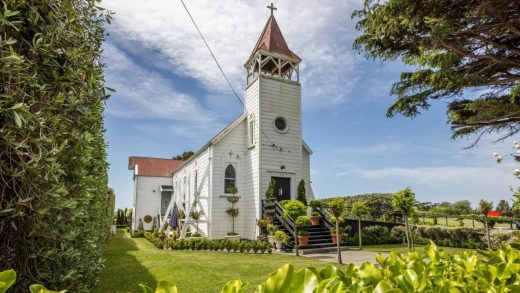
With major storms already forcing evacuations, residents on Wellington’s south coast welcomed a national plan to protect their homes from the growing risks of climate change.
But Ōwhiro Bay resident Eugene Doyle noticed that new funding to support communities to begin planning was absent from the announcement. Doyle, a member of Wellington community association 4C (Coastal Communities Climate Change), said residents are raring to go.
Even so, one scientist warned that councils are being asked to plan for an unrealistically hot 2100.
READ MORE:
* Climate change: Still unclear who’ll pay when homeowners have to move
* Familiar reforms part of new Government plan to adapt to a hotter world
* We culturally fixed on the hull of the status quo, like barnacles on a sinking ship when it comes to climate change
With the Earth already 1.1C above pre-industrial times, the country is increasingly experiencing extreme temperatures. As the mercury continues to rise, droughts will become more common and last longer. When rain comes, rainfall will be more extreme. People, property and infrastructure will be at higher risk of fire, flooding and storm damage.
Sea level rise is being accelerated by the subsidence of some coastal land, so many communities have less time to prepare than once expected.
For Doyle and the communities he represents, the national adaptation plan is well overdue.
ROBERT KITCHIN/Stuff
Wellingtonian Eugene Doyle and Climate Change Minister James Shaw at Ōwhiro Bay.
“The Government is doing a lot of the right things. But it’s the pace of change that’s the real issue,” Doyle said. “Time and the tide are both running against us.
“If we do too much thinking about thinking and planning about planning, we shunt the heavy lifting, the real action several years down the track, you’re compressing the timelines, which means we’ll end up with maladaptation.”
Adaptation would need to be planned “bay by bay, bridge by bridge”, Doyle added. Localised working groups for each location comprised of community members, scientists, mana whenua, infrastructure experts and council should prepare for the impacts and choose the best solutions.
“You want to do what is fact-based, science-based and what is reasonable… [but] you have to take communities on the journey.”
New funding announcements were absent from the Government’s adaptation plan, Doyle said.
Asked about funding at the launch of the plan, Climate Change Minister James Shaw said there was unlikely to be a single pot, but “a number of financial tools” will pay for different policies.
Shaw said adaptation costs should be “appropriately shared” between central government and others, such property owners, councils, insurers and banks. Even so, the Government will apply a “hardship lens” to ensure lower-resourced communities are well-supported, he added.
MONIQUE FORD/Stuff
Eugene Doyle is a member of 4C, an association of Wellington residents associations and local groups.
Forest & Bird chief executive Nicola Toki said there was no time left for delays. “Looking at the flooded paddocks and homes in my community, it’s time to get started,” said the Cantabrian.
She was heartened to see that priority would be given to natural solutions over artificial infrastructure. “Restoring dunes, forests and wetlands can help us weather climate change impacts.”
These ecosystems would also absorb greenhouse gas, reducing the scale of climate change. For that reason, Toki called for “much stronger commitments” to restore forests, sand dunes and mangroves. Wetland areas needed to double, she said.
Trees could also protect residents in cities by providing shading and moisture on scorching hot days, the plan said.
Luke Harrington, a researcher with the University of Waikato, said urban greening was a promising start – but more would be needed to protect people from extreme heat.
“This will only work alongside early warning systems, pop-up cooling centres which are free and easy to access, and monitoring plans which are tailored to our most vulnerable friends and whānau. Often it is the very old, the very young, and those with chronic health conditions who need targeted assistance when extreme weather events occur.”
He also noted that the Government recommended councils use two particular climate modelling scenarios when they screen for risks and make decisions about where to locate infrastructure. The Government calls one (officially known as SSP5-8.5) the “fossil fuel-intensive” scenario. This is contrasted with the “middle of the road” (or SSP2-4.5) scenario.
Harrington warned that the fossil fuel-intensive path relies on “extremely unrealistic assumptions” – such as a five-fold increase in coal. In this world, global heating would increase by about 4.7C by the end of the century.
Under the current policies of global governments, the world is expected to warm by about 2.7C, according to the Climate Action Tracker. That’s in line with the middle scenario (SSP2-4.5).
If all the promises made at the last UN global summit were fully met, the temperature rise could be limited to 1.8C, the climate policy analysis found.
Yet if unrealistic temperature scenarios caused councils to overestimate risks and overzealously prevent development, this would be less of an issue for coastal communities, said Bill Hare, whose company Climate Analytics helps to produce the Climate Action Tracker.
Even if fossil fuels were eliminated today, the heating already produced will continue to melt the polar ice caps and glaciers for centuries. “Sea level rise is a long-term problem and will not be turned around,” Hare said.


